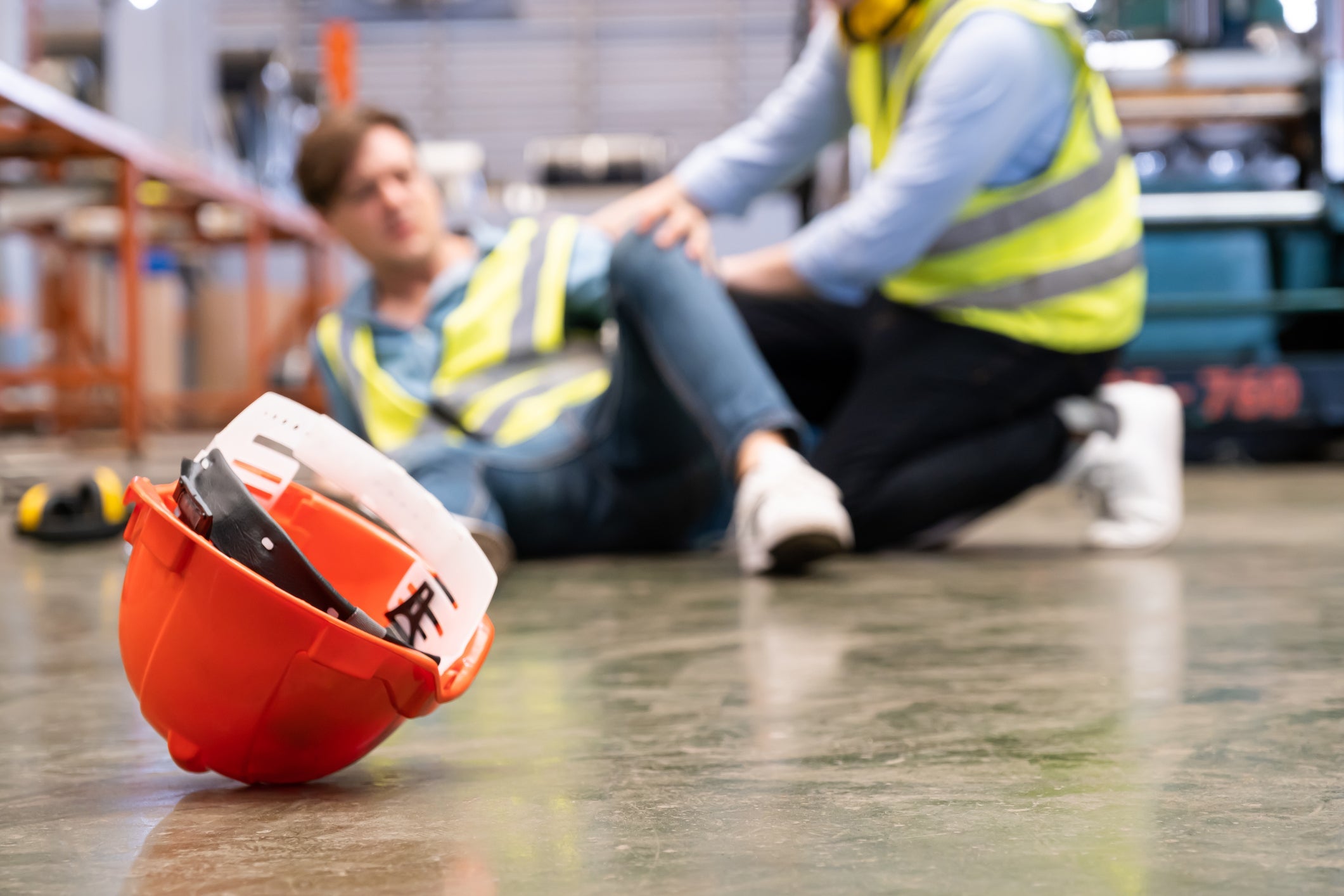Introduction: The Hidden Threat Beneath Your Feet
Slips, trips, and falls—sounds minor, right? But don’t be fooled. These seemingly small incidents account for millions of workplace injuries each year, affecting every industry from construction to office settings. In fact, according to OSHA, slips, trips, and falls are among the leading causes of lost workdays and serious injury on the job.
But here’s the good news: nearly all of these accidents are 100% preventable.
In this guide, we’ll explore practical strategies to help you build a safer work environment—starting from the ground up.
Understanding the Causes of Slips, Trips, and Falls
Slips
Slips happen when there’s too little traction between your footwear and the walking surface. Common causes include:
- Wet or oily surfaces
- Spills not cleaned up promptly
- Loose rugs or mats
- Weather hazards (rain, snow, ice)
Trips
Trips occur when your foot hits an object, causing you to lose balance. Common culprits:
- Cluttered walkways
- Unsecured cables or hoses
- Uneven flooring or steps
- Poor lighting
Falls
Falls can result from a slip or trip—or from working at height. Causes include:
- Unprotected edges
- Misused ladders or scaffolding
- Missing fall protection gear
Why Slips, Trips, and Falls Are a Big Deal
- Account for over 25% of all workplace injury claims
- Cause 15% of all accidental deaths (second only to motor vehicles)
- Lead to lawsuits, fines, and lost productivity
- Can impact both physical health and financial stability of workers and businesses
🔗 OSHA Fact Sheet on Fall Prevention
Top 10 Tips to Prevent Slips, Trips, and Falls
1. Keep Walking Surfaces Clean and Dry
The #1 rule of slip prevention? Keep it dry.
- Clean up spills immediately
- Post “Wet Floor” signs where appropriate
- Use moisture-absorbing mats at entrances
2. Use the Right Floor Mats
Non-slip mats are a game-changer. Choose high-traction, beveled-edge floor mats in high-traffic areas and entryways
3. Improve Lighting Conditions
- Replace burnt-out bulbs quickly
- Add motion-sensor lights in dark corners
- Use LED strips on stairs for better visibility
4. Declutter Workspaces
- Keep aisles and hallways clear
- Use cable organizers to tuck away cords
- Store tools and supplies properly
5. Mark Hazardous Areas Clearly
Use high-visibility safety signs and hazard tape to alert workers of:
- Step-downs and uneven surfaces
- Construction zones
- Slippery zones near machines or wash stations
Footwear Matters: Choose the Right Shoes
Workplace safety starts from the ground up. Non-slip shoes with durable soles and proper grip can reduce slips dramatically.
Features to Look For:
- Slip-resistant outsoles
- Oil and water resistance
- Ankle support
- Composite or steel toe (if required)
Protecting Workers at Height
6. Use Guardrails and Safety Barriers
Every platform above 4 feet (general industry) or 6 feet (construction) must have:
- Guardrails
- Midrails
- Toe boards
7. Inspect and Use Ladders Correctly
- Inspect before use
- Set on stable, level surfaces
- Use 3-point contact (two hands, one foot or vice versa)
8. Wear Fall Protection Gear
Harnesses and lanyards aren’t optional—they’re lifesavers.
Training and Culture: The Human Side of Safety
9. Train Employees on Hazard Awareness
- Host regular safety training sessions
- Cover housekeeping, fall protection, and ladder use
- Encourage reporting of unsafe conditions
10. Encourage a Safety-First Culture
- Reward employees who report hazards
- Conduct safety walkthroughs
- Supervisors should model safe behavior
Industry-Specific Risk Zones
Construction
- Uneven terrain and open trenches
- Elevated work without harnesses
- Debris in walk paths
Warehousing and Logistics
- Wet loading docks
- Spilled packaging materials
- Rushed foot traffic
Manufacturing
- Oil leaks from machines
- Poorly lit assembly lines
- Overcrowded production zones
Healthcare
- Spills from bodily fluids or cleaning agents
- Rolling carts left in hallways
- Fast-paced foot traffic in emergency rooms
Best Products for Preventing Workplace Falls
- Fall Arrest Systems
- Traffic and Safety Cones
- Wet Floor and Hazard Signs
- Anti-Fatigue Floor Mats
- Kneeling Pads
Creating a Long-Term Safety Plan
Slips and trips aren’t one-time problems. You need systems in place to track, inspect, and correct issues regularly.
Checklist for Ongoing Safety:
- Weekly floor and lighting inspections
- Monthly ladder checks
- Seasonal PPE updates
- Annual training refreshers
Conclusion: Don’t Let Safety Slip Away
Slips, trips, and falls may seem inevitable—but they’re not. With smart planning, quality equipment, and employee training, you can drastically reduce these risks.
Here’s your action list:
- Audit your workspace
- Invest in proper PPE and signage
- Train your team regularly
FAQs
1. What’s the most common cause of workplace falls?
Wet floors and poor housekeeping are the top culprits, especially in warehouses and healthcare facilities.
2. Do I need fall protection below 6 feet?
Yes. OSHA mandates protection at 4 feet in general industry and 6 feet in construction.
3. Can floor mats really reduce slips?
Absolutely. Anti-slip mats absorb moisture, add grip, and mark transitions in floor surfaces.
4. Should office workers worry about slips and falls?
Yes. Trips over cables and poor lighting can cause injuries in office settings too.
5. Where can I buy reliable safety equipment online?
You can shop quality safety supplies, signage, and PPE at Our Store.

